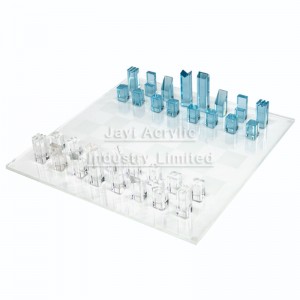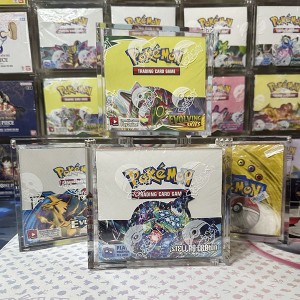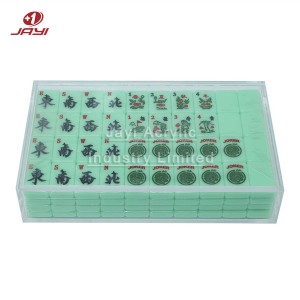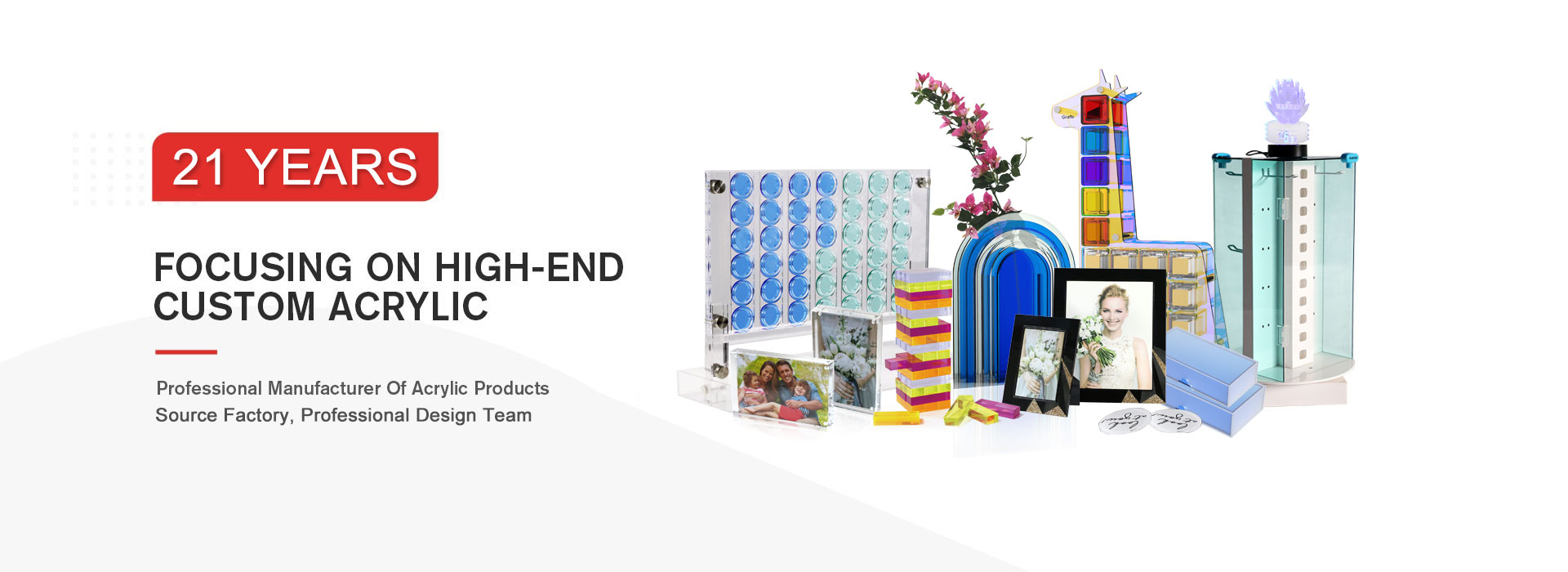
When it comes to choosing the right plastic material for your project—whether it’s a custom display case, a greenhouse panel, a safety shield, or a decorative sign—two names consistently rise to the top: acrylic plastic and polycarbonate. At first glance, these two thermoplastics might seem interchangeable. Both offer transparency, versatility, and durability that outperform traditional glass in many applications. But dig a little deeper, and you’ll discover profound differences that can make or break the success of your project.
Selecting the wrong material could lead to costly replacements, safety hazards, or a finished product that fails to meet your aesthetic or functional needs. For example, a greenhouse builder who opts for acrylic over polycarbonate might face premature cracking in harsh weather, while a retail store using polycarbonate for high-end product displays might sacrifice the crystal-clear shine that attracts customers. That’s why understanding the critical distinctions between acrylic and polycarbonate is non-negotiable.
In this comprehensive guide, we’ll break down 10 key differences between acrylic plastic and polycarbonate—covering strength, clarity, temperature resistance, and more. We’ll also address the most common questions our clients ask, so you can make an informed decision that aligns with your project’s goals, budget, and timeline.
Differences Between Acrylic And Polycarbonate

1. Strength
When it comes to strength—specifically impact resistance—polycarbonate stands in a league of its own. This material is famously tough, boasting 250 times the impact resistance of glass and up to 10 times that of acrylic. To put that into perspective: a baseball thrown at a polycarbonate panel will likely bounce off without leaving a mark, while the same impact could shatter acrylic into large, sharp pieces. Polycarbonate’s strength comes from its molecular structure, which is more flexible and able to absorb energy without breaking.
Acrylic, on the other hand, is a rigid material that offers decent strength for low-impact applications but falls short in high-risk scenarios. It’s often compared to glass in terms of brittleness—while it’s lighter and less likely to shatter into tiny, dangerous shards than glass, it’s still prone to cracking or breaking under sudden force. This makes acrylic a poor choice for safety barriers, riot shields, or children’s toys, where impact resistance is critical. Polycarbonate, however, is the go-to material for these high-stress applications, as well as for items like bulletproof windows, machine guards, and outdoor playground equipment.
It’s important to note that while polycarbonate is stronger against impacts, acrylic has better compressive strength—meaning it can withstand more weight when pressed from above. For example, a thick acrylic shelf might hold more weight than a similarly thick polycarbonate shelf without bending. But in most cases, when clients ask about “strength” in these materials, they’re referring to impact resistance, where polycarbonate is the clear winner.
2. Optical Clarity
Optical clarity is a make-or-break factor for applications like display cases, signage, museum exhibits, and lighting fixtures—and here, acrylic takes the lead. Acrylic plastic offers 92% light transmission, which is even higher than glass (which typically sits around 90%). This means acrylic produces a crystal-clear, distortion-free view that makes colors pop and details stand out. It also doesn’t yellow as quickly as some other plastics, especially when treated with UV inhibitors.
Polycarbonate, while still transparent, has a slightly lower light transmission rate—usually around 88-90%. It also tends to have a subtle blue or green tint, especially in thicker panels, which can distort colors and reduce clarity. This tint is a result of the material’s molecular composition and is difficult to eliminate. For applications where color accuracy and absolute clarity are essential—like high-end retail displays for jewelry or electronics, or art frames—acrylic is the superior choice.
That said, polycarbonate’s clarity is more than sufficient for many practical applications, such as greenhouse panels, skylights, or safety goggles. And if UV resistance is a concern, both materials can be treated with UV inhibitors to prevent yellowing and damage from sunlight. But when it comes to pure optical performance, acrylic can’t be beat.
3. Temperature Resistance
Temperature resistance is a critical factor for outdoor applications, industrial settings, or projects that involve exposure to heat sources like light bulbs or machinery. Here, the two materials have distinct strengths and weaknesses. Polycarbonate has a higher heat resistance than acrylic, with a heat deflection temperature (HDT) of around 120°C (248°F) for most grades. This means it can withstand higher temperatures without softening, warping, or melting.
Acrylic, by contrast, has a lower HDT—typically around 90°C (194°F) for standard grades. While this is sufficient for many indoor applications, it can be a problem in outdoor settings where temperatures soar, or in projects that involve direct exposure to heat. For example, an acrylic light fixture cover placed too close to a high-wattage bulb might warp over time, while a polycarbonate cover would remain intact. Polycarbonate also performs better in cold temperatures—it remains flexible even at sub-zero temperatures, while acrylic can become more brittle and prone to cracking in freezing conditions.
However, it’s worth noting that there are specialised grades of acrylic with enhanced temperature resistance (up to 140°C / 284°F) that can be used in more demanding environments. These grades are often used in industrial applications like machine covers or laboratory equipment. But for most general-purpose projects, polycarbonate’s superior temperature resistance makes it the better choice for outdoor or high-heat settings, while standard acrylic is fine for indoor, moderate-temperature use.
4. Scratch Resistance
Scratch resistance is another key consideration, especially for high-traffic applications like retail displays, tabletops, or protective covers. Acrylic has excellent scratch resistance—significantly better than polycarbonate. This is because acrylic has a harder surface (a Rockwell hardness rating of around M90) compared to polycarbonate (which has a rating of around M70). A harder surface means it’s less likely to pick up minor scratches from everyday use, like wiping with a cloth or contact with small objects.
Polycarbonate, on the other hand, is relatively soft and prone to scratching. Even light abrasion—like cleaning with a rough sponge or dragging a tool across the surface—can leave visible marks. This makes polycarbonate a poor choice for applications where the surface will be touched or handled frequently. For example, an acrylic tablet display stand in a store will stay looking new for longer, while a polycarbonate stand might show scratches after just a few weeks of use.
That said, both materials can be treated with scratch-resistant coatings to improve their durability. A hard coat applied to polycarbonate can bring its scratch resistance close to that of untreated acrylic, making it a viable option for high-traffic areas. But these coatings add to the cost of the material, so it’s important to weigh the benefits against the expense. For most applications where scratch resistance is a priority and cost is a concern, untreated acrylic is the better value.
5. Chemical Resistance
Chemical resistance is essential for applications in laboratories, healthcare settings, industrial facilities, or anywhere the material might come into contact with cleaners, solvents, or other chemicals. Acrylic has good resistance to many common chemicals, including water, alcohol, mild detergents, and some acids. However, it’s vulnerable to strong solvents like acetone, methylene chloride, and gasoline—these chemicals can dissolve or craze (create small cracks) on the surface of acrylic.
Polycarbonate has a different chemical resistance profile. It’s more resistant to strong solvents than acrylic, but it’s vulnerable to alkalis (like ammonia or bleach), as well as some oils and greases. For example, a polycarbonate container used to store bleach would become cloudy and brittle over time, while an acrylic container would hold up better. On the flip side, a polycarbonate part exposed to acetone would remain intact, while acrylic would be damaged.
The key here is to identify the specific chemicals the material will encounter. For general cleaning with mild detergents, both materials are fine. But for specialized applications, you’ll need to match the material to the chemical environment. For example, acrylic is better for use with mild acids and alcohols, while polycarbonate is better for use with solvents. It’s also important to note that prolonged exposure to any chemical—even those the material is supposed to resist—can cause damage over time, so regular inspection is recommended.
6. Flexibility
Flexibility is a crucial factor for applications that require the material to bend or curve without breaking, such as curved signage, greenhouse panels, or flexible protective covers. Polycarbonate is a highly flexible material—it can be bent to a tight radius without cracking or snapping. This flexibility comes from its molecular structure, which allows the material to stretch and return to its original shape without permanent deformation. For example, a polycarbonate sheet can be curved into a semicircle and used as a curved display case or a greenhouse arch.
Acrylic, by contrast, is a rigid material with very little flexibility. It can be bent with heat (a process called thermoforming), but it will crack if bent too far at room temperature. Even after thermoforming, acrylic remains relatively stiff and won’t flex much under pressure. This makes it a poor choice for applications that require repeated bending or flexibility, like flexible safety shields or curved panels that need to withstand wind or movement.
It’s important to distinguish between flexibility and impact resistance here—while polycarbonate is both flexible and impact-resistant, acrylic is rigid and brittle. For applications that require the material to hold a specific shape without bending (like a flat display shelf or a rigid sign), acrylic’s rigidity is an advantage. But for applications that require flexibility, polycarbonate is the only practical choice.
7. Cost
Cost is often a deciding factor for many projects, and here’s where acrylic has a clear advantage. Acrylic is generally 30-50% less expensive than polycarbonate, depending on the grade, thickness, and quantity. This price difference can add up significantly for large projects—for example, covering a greenhouse with acrylic panels would cost far less than using polycarbonate.
The lower cost of acrylic is due to its simpler manufacturing process. Acrylic is made from methyl methacrylate monomer, which is relatively inexpensive and easy to polymerize. Polycarbonate, on the other hand, is made from bisphenol A (BPA) and phosgene, which are more expensive raw materials, and the polymerization process is more complex. Additionally, polycarbonate’s superior strength and temperature resistance mean it’s often used in high-performance applications, which drives up demand and price.
That said, it’s important to consider the total cost of ownership, not just the initial material cost. For example, if you use acrylic in a high-impact application, you might have to replace it more frequently than polycarbonate, which could end up costing more in the long run. Similarly, if you need to apply a scratch-resistant coating to polycarbonate, the added cost might make it more expensive than acrylic. But for most low-impact, indoor applications where cost is a priority, acrylic is the more budget-friendly option.
8. Aesthetics
Aesthetics play a key role in applications like signage, display cases, art frames, and decorative elements—and acrylic is the clear winner here. As we mentioned earlier, acrylic has superior optical clarity (92% light transmission), which gives it a crystal-clear, glass-like appearance. It also has a smooth, glossy surface that reflects light beautifully, making it ideal for high-end applications where appearance is everything.
Polycarbonate, while transparent, has a slightly matte or hazy appearance compared to acrylic, especially in thicker sheets. It also tends to have a subtle tint (usually blue or green) that can affect the appearance of objects behind it. For example, a polycarbonate frame around a painting might make the colors look slightly dull, while an acrylic frame would let the painting’s true colors shine through. Additionally, polycarbonate is more prone to scratching, which can ruin its appearance over time—even with a scratch-resistant coating.
That said, polycarbonate is available in a wider range of colors and finishes than acrylic, including opaque, translucent, and textured options. This makes it a good choice for decorative applications where clarity isn’t a priority, like colored signage or decorative panels. But for applications where a clean, clear, glossy appearance is essential, acrylic is the better choice.
9. Polish
The ability to polish the material to remove scratches or restore its shine is an important consideration for long-term durability. Acrylic is easy to polish—minor scratches can be removed with a polishing compound and a soft cloth, while deeper scratches can be sanded down and then polished to restore the surface to its original clarity. This makes acrylic a low-maintenance material that can be kept looking new for years with minimal effort.
Polycarbonate, on the other hand, is difficult to polish. Its soft surface means that sanding or polishing can easily damage the material, leaving it with a hazy or uneven finish. Even minor scratches are hard to remove without specialized equipment and techniques. This is because polycarbonate’s molecular structure is more porous than acrylic, so polishing compounds can get trapped in the surface and cause discoloration. For this reason, polycarbonate is often considered a “one-and-done” material—once it’s scratched, it’s hard to restore to its original appearance.
If you’re looking for a material that’s easy to maintain and can be restored if damaged, acrylic is the way to go. Polycarbonate, by contrast, requires more careful handling to avoid scratches, as they’re often permanent.
10. Applications
Given their distinct properties, acrylic and polycarbonate are used in very different applications. Acrylic’s strengths—superior clarity, scratch resistance, and lower cost—make it ideal for indoor applications where aesthetics and low impact are key. Common uses for acrylic include: custom acrylic display cases, acrylic display stands, acrylic boxes, acrylic trays, acrylic frames, acrylic blocks, acrylic furniture, acrylic vases, and other custom acrylic products.
Polycarbonate’s strengths—superior impact resistance, temperature resistance, and flexibility—make it ideal for outdoor applications, high-stress environments, and projects that require flexibility. Common uses for polycarbonate include: greenhouse panels and skylights (where temperature resistance and flexibility are key), safety barriers and machine guards (where impact resistance is critical), riot shields and bulletproof windows, children’s toys and playground equipment, and automotive parts (like headlight covers and sunroofs).
There are some overlaps, of course—both materials can be used for outdoor signage, for example—but the specific properties of each material will determine which is better for the job. For example, outdoor signage in a low-traffic area might use acrylic (for clarity and cost), while signage in a high-traffic area or a harsh weather environment would use polycarbonate (for impact and temperature resistance).
FAQs

Can acrylic or polycarbonate be used outdoors?
Both acrylic and polycarbonate can be used outdoors, but polycarbonate is the better choice for most outdoor applications. Polycarbonate has superior temperature resistance (withstanding both high heat and cold) and impact resistance (resisting damage from wind, hail, and debris). It also remains flexible in cold weather, while acrylic can become brittle and crack. However, acrylic can be used outdoors if it’s treated with UV inhibitors to prevent yellowing, and if it’s installed in a low-impact area (like a covered patio sign). For exposed outdoor applications like greenhouses, skylights, or outdoor safety barriers, polycarbonate is more durable. For covered or low-impact outdoor uses, acrylic is a more cost-effective option.
Is acrylic or polycarbonate better for display cases?
Acrylic is almost always better for display cases. Its superior optical clarity (92% light transmission) ensures that products inside the case are visible with minimal distortion, making colors pop and details stand out—critical for retail displays of jewelry, electronics, or cosmetics. Acrylic also has better scratch resistance than polycarbonate, so it will stay looking new even with frequent handling. While polycarbonate is stronger, display cases rarely face high-impact scenarios, so the extra strength isn’t necessary. For high-end or high-traffic display cases, acrylic is the clear choice. If your display case will be used in a high-impact environment (like a children’s museum), you might opt for polycarbonate with a scratch-resistant coating.
Which material is more durable: acrylic or polycarbonate?
The answer depends on how you define “durability.” If durability means impact resistance and temperature resistance, polycarbonate is more durable. It can withstand 10 times the impact of acrylic and higher temperatures (up to 120°C vs. 90°C for standard acrylic). It also remains flexible in cold weather, while acrylic becomes brittle. However, if durability means scratch resistance and ease of maintenance, acrylic is more durable. Acrylic has a harder surface that resists scratches, and minor scratches can be polished out to restore its appearance. Polycarbonate is prone to scratching, and scratches are hard to remove. For high-stress, outdoor, or high-temperature applications, polycarbonate is more durable. For indoor, low-impact applications where scratch resistance and maintenance are key, acrylic is more durable.
Can acrylic or polycarbonate be painted or printed on?
Both acrylic and polycarbonate can be painted or printed on, but acrylic is easier to work with and produces better results. Acrylic’s smooth, hard surface allows paint and ink to adhere evenly, and it can be primed to improve adhesion further. It also accepts a wide range of paints, including acrylic, enamel, and spray paints. Polycarbonate, by contrast, has a more porous surface and releases oils that can prevent paint from adhering properly. To paint polycarbonate, you need to use a specialized paint designed for plastic, and you may need to sand or prime the surface first. For printing, both materials work with digital printing techniques like UV printing, but acrylic produces sharper, more vibrant prints due to its superior clarity. If you need a material that can be painted or printed on for decorative or branding purposes, acrylic is the better choice.
Is acrylic or polycarbonate more environmentally friendly?
Neither acrylic nor polycarbonate is a perfect choice for the environment, but acrylic is generally considered slightly more eco-friendly. Both are thermoplastics, which means they can be recycled, but recycling rates for both are relatively low due to the need for specialized recycling facilities. Acrylic has a lower carbon footprint during manufacturing than polycarbonate—its raw materials are less energy-intensive to produce, and the polymerization process uses less energy. Polycarbonate is also made from bisphenol A (BPA), a chemical that has raised environmental and health concerns (though most polycarbonate used in consumer products is BPA-free now). Additionally, acrylic is more durable in low-impact applications, so it may need to be replaced less frequently, reducing waste. If environmental impact is a priority, look for recycled acrylic or polycarbonate, and choose the material that best fits your project’s needs to minimize replacement cycles.
Conclusion
Choosing between acrylic plastic and polycarbonate isn’t a matter of which material is “better”—it’s about which material is better for your project. By understanding the 10 critical differences we’ve outlined—from strength and clarity to cost and applications—you can match the material’s properties to your project’s goals, budget, and environment.
Acrylic shines in indoor, low-impact applications where clarity, scratch resistance, and cost are key. It’s the perfect choice for display cases, art frames, signage, and lighting fixtures. Polycarbonate, on the other hand, excels in outdoor, high-stress applications where impact resistance, temperature resistance, and flexibility are critical. It’s ideal for greenhouses, safety barriers, playground equipment, and automotive parts.
Remember to consider the total cost of ownership, not just the initial material cost—opting for a cheaper material that needs frequent replacement can end up costing more in the long run. And if you’re still unsure which material to choose, consult with a plastic supplier or manufacturer who can help you evaluate your specific needs.
Whether you choose acrylic or polycarbonate, both materials offer versatility and durability that make them superior to traditional materials like glass. With the right choice, your project will look great and stand the test of time.
About Jayi Acrylic Industry Limited
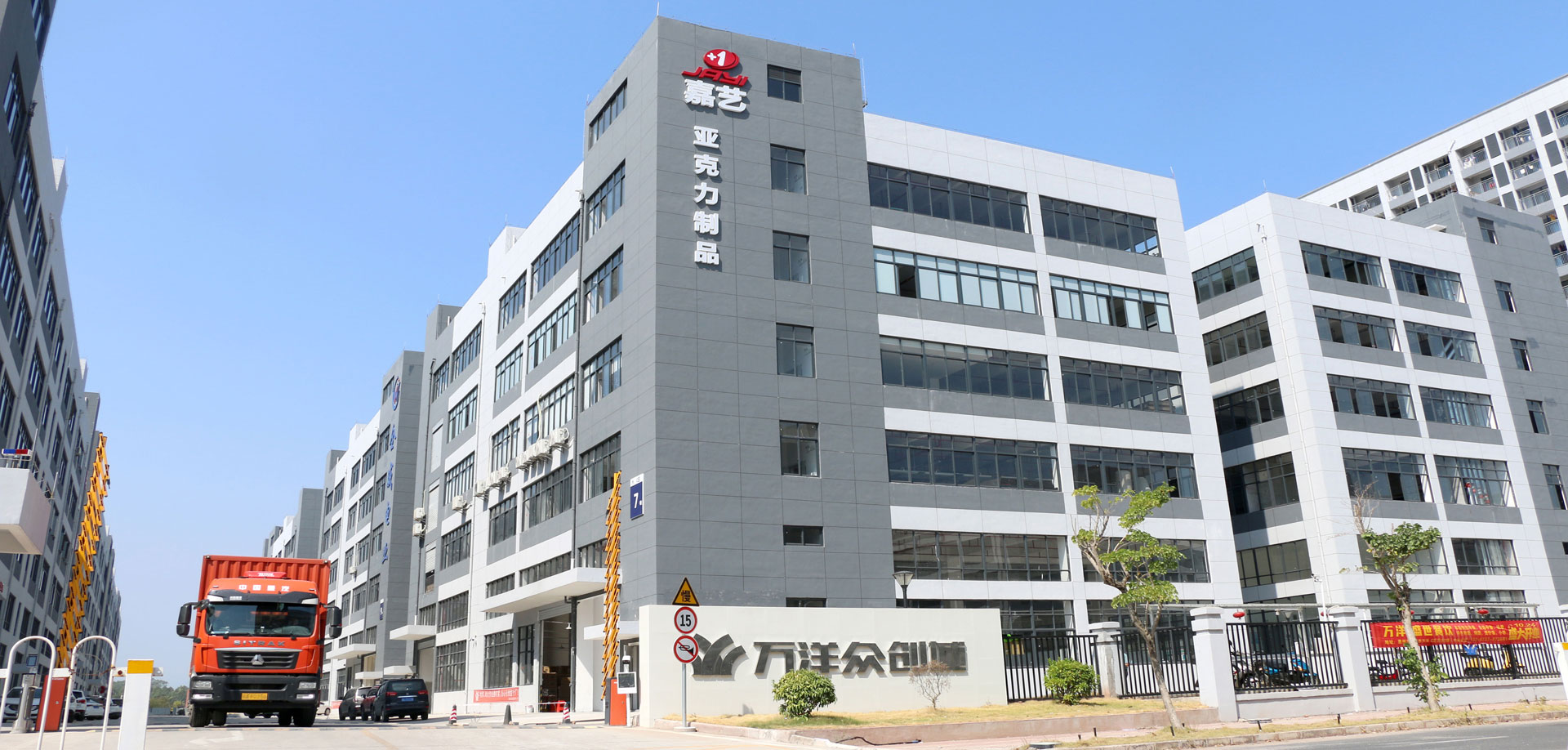
Based in China, JAYI Acrylic is a seasoned expert in custom acrylic product manufacturing, committed to creating tailored solutions that fulfill unique needs and deliver exceptional user experiences. With over 20 years of industry prowess, we’ve collaborated with clients globally, refining our ability to turn creative concepts into tangible, high-quality products.
Our custom acrylic products are crafted to combine versatility, reliability, and visual elegance—catering to diverse requirements across commercial, industrial, and personal use cases. Strictly upholding international standards, our factory holds ISO9001 and SEDEX certifications, guaranteeing consistent quality control and ethical production processes from design to delivery.
We merge meticulous craftsmanship with client-centric innovation, producing custom acrylic items that excel in functionality, durability, and customized aesthetics. Whether for display cases, storage organizers, or bespoke acrylic creations, JAYI Acrylic is your trusted partner for bringing custom acrylic visions to life.
Have Questions? Get A Quote
Want to Know More About Acrylic Products?
Click the Button Now.
You Might Also Like Other Custom Acrylic Products
Post time: Nov-27-2025


